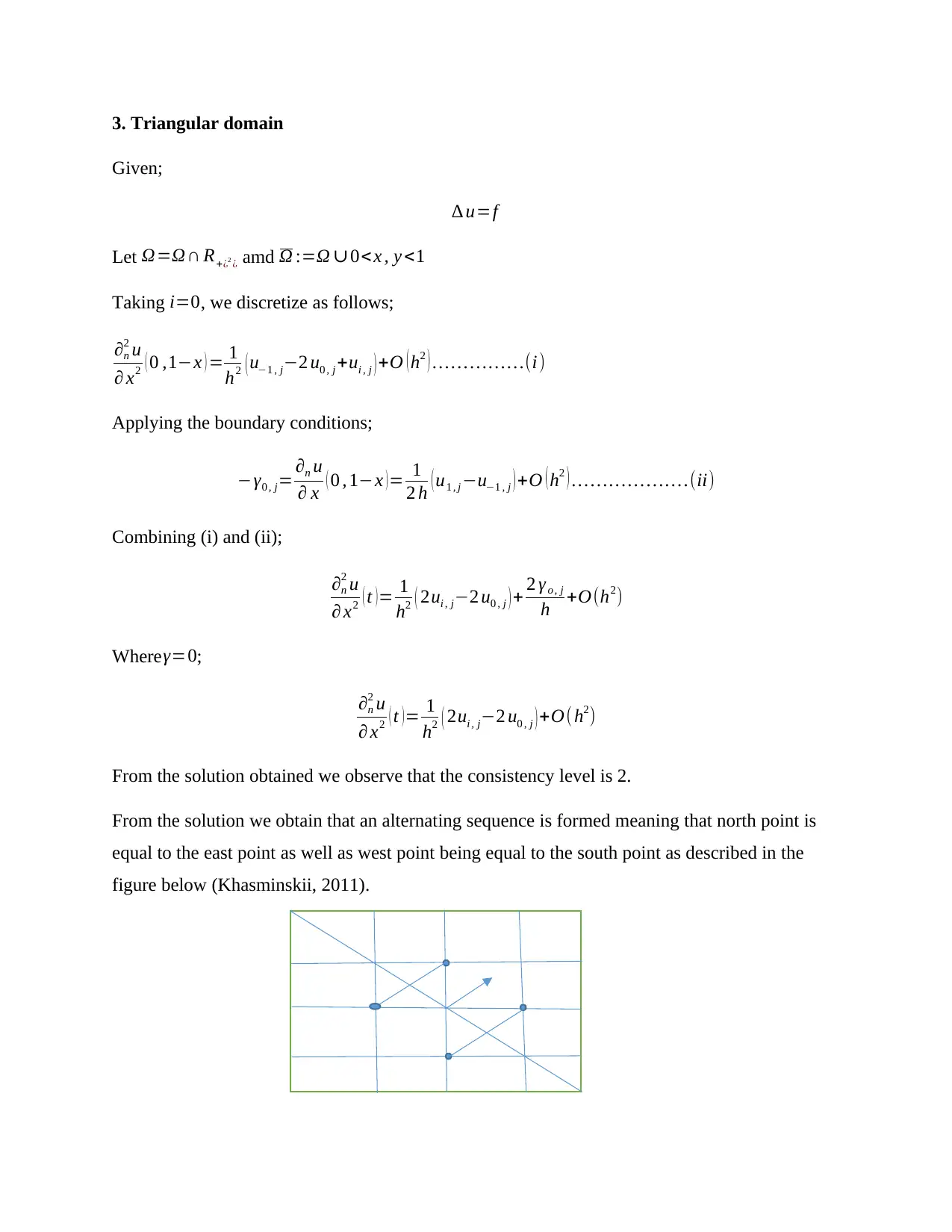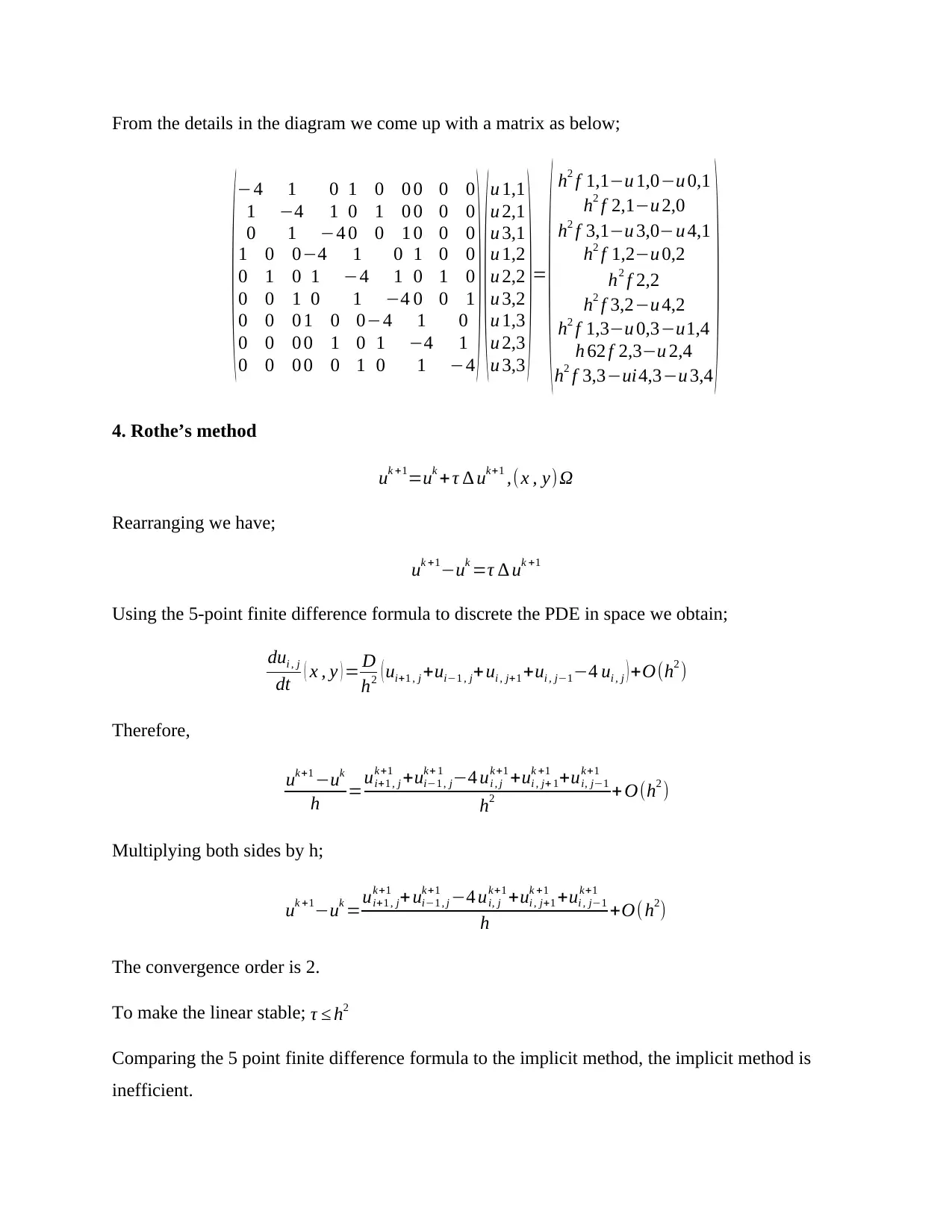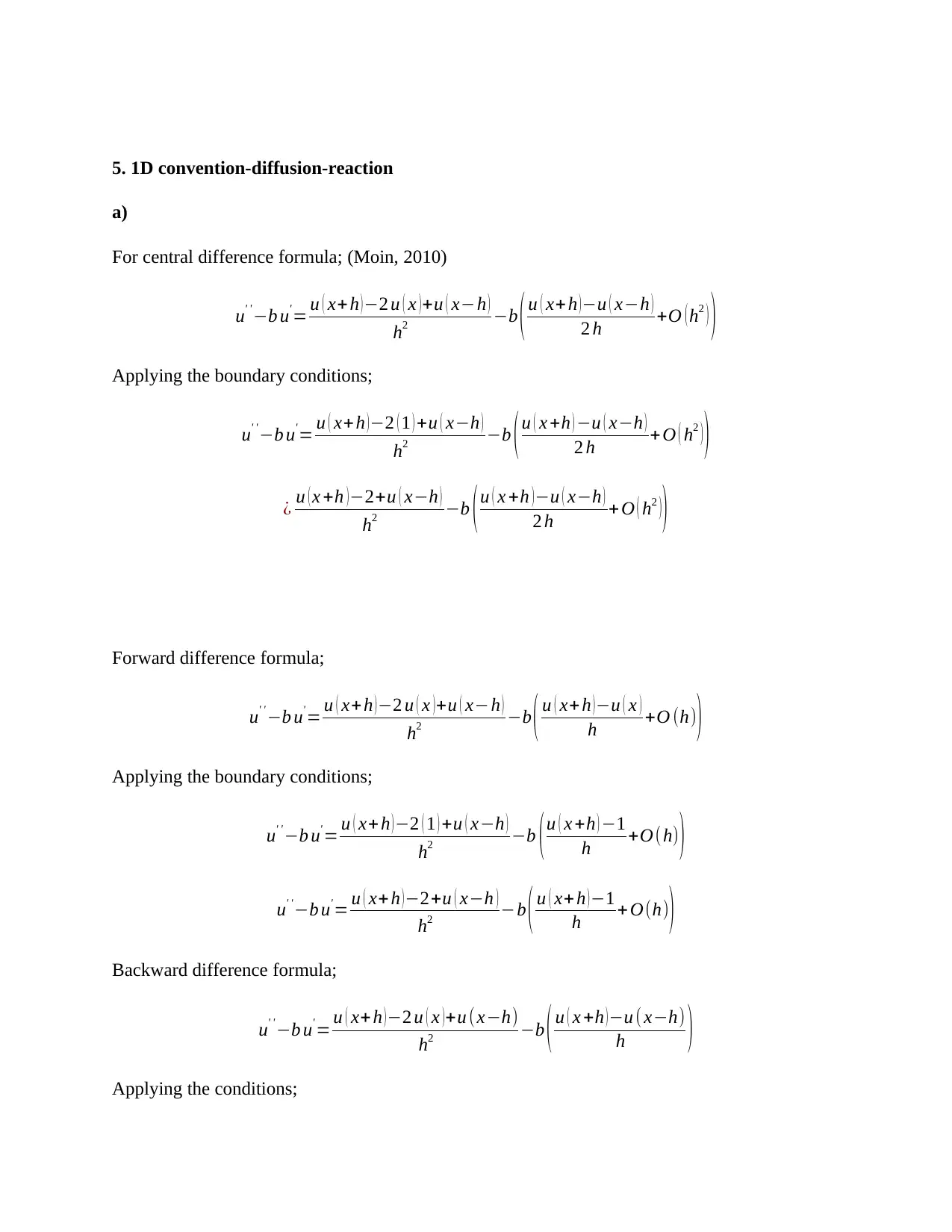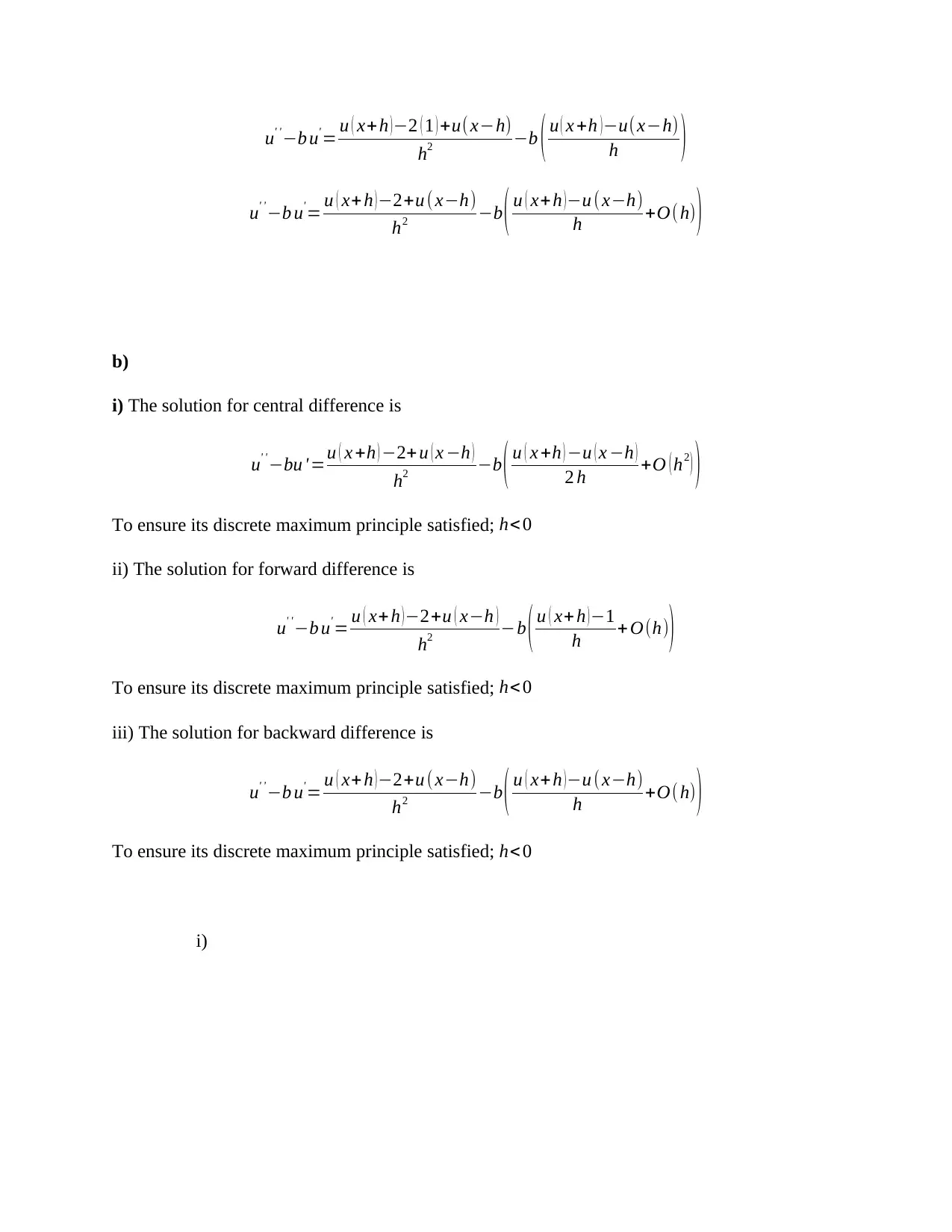Exploring Finite Difference Methods for Numerical PDE Solutions
VerifiedAdded on 2023/04/25
|5
|1165
|227
Homework Assignment
AI Summary
This assignment delves into the numerical solution of partial differential equations (PDEs) using finite difference methods. It begins by discretizing a triangular domain and applying boundary conditions to derive a finite difference approximation, analyzing its consistency level. The assignment then explores Rothe's method for time discretization, employing a 5-point finite difference formula for spatial discretization and assessing the convergence order and stability conditions. Finally, it examines the 1D convection-diffusion-reaction equation, applying central, forward, and backward difference formulas, deriving the discrete maximum principle for each scheme. The document concludes with references to relevant literature on stochastic stability and numerical analysis. Desklib offers a wealth of similar solved assignments and past papers to aid students in their studies.
1 out of 5












![[object Object]](/_next/static/media/star-bottom.7253800d.svg)